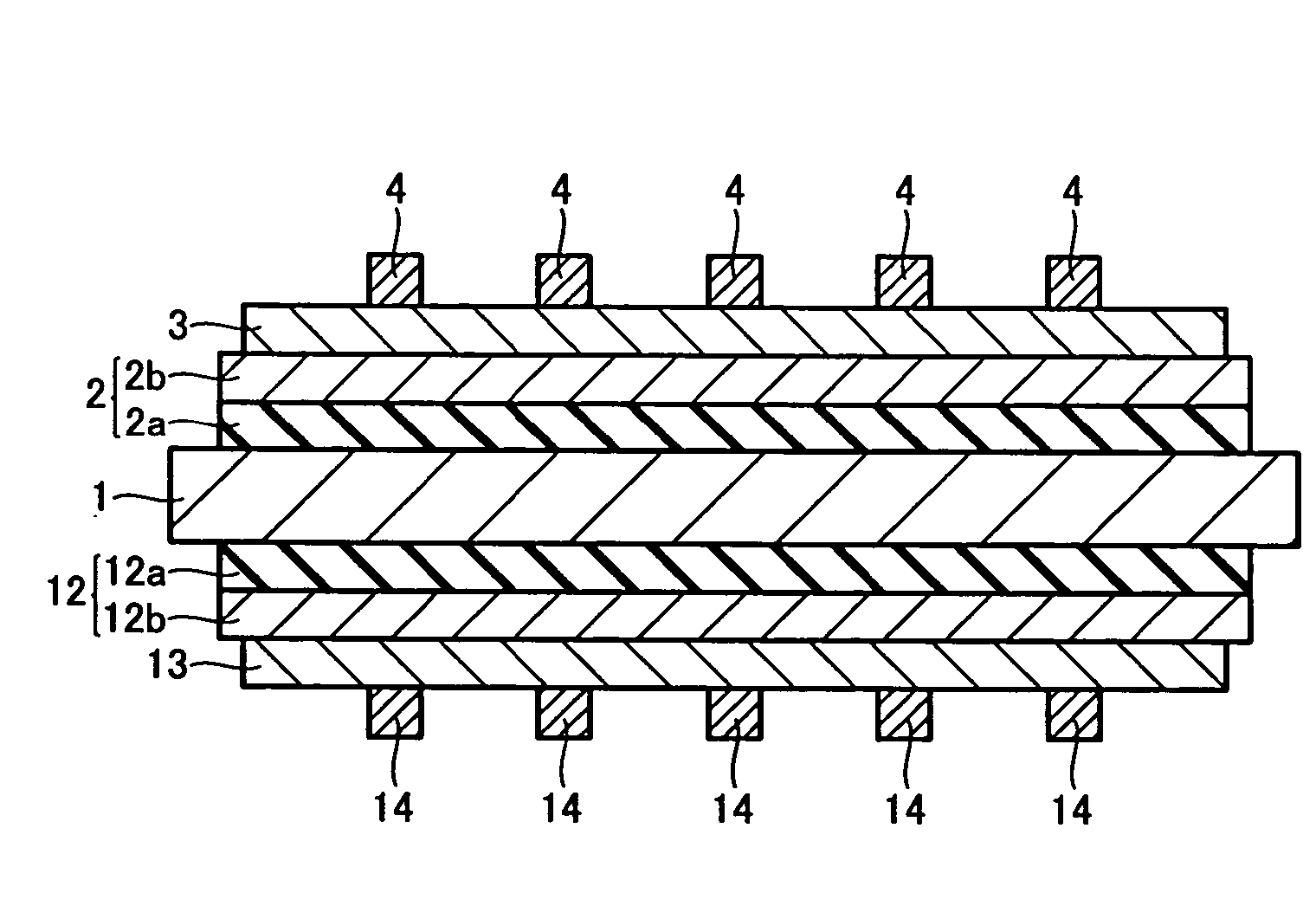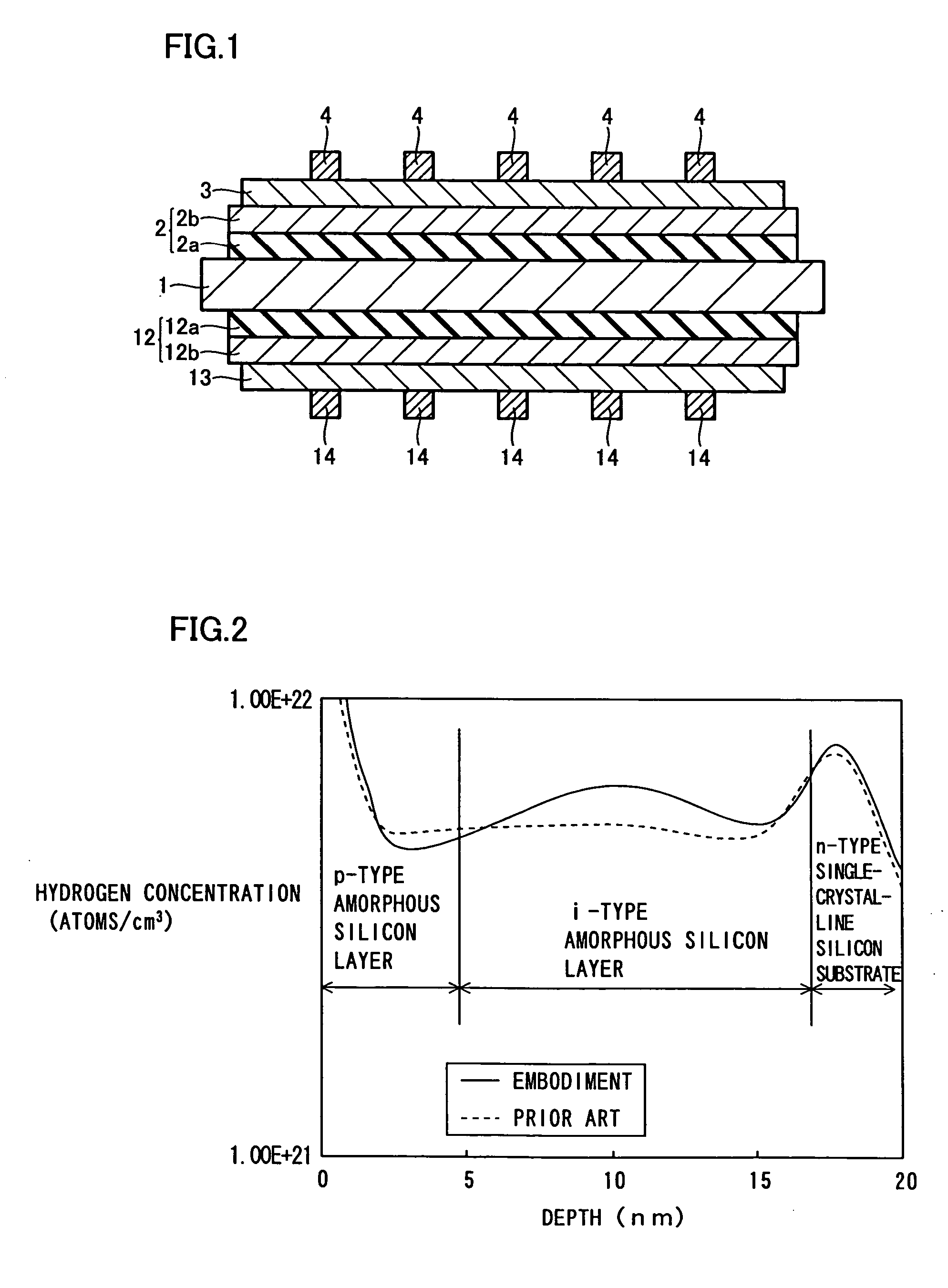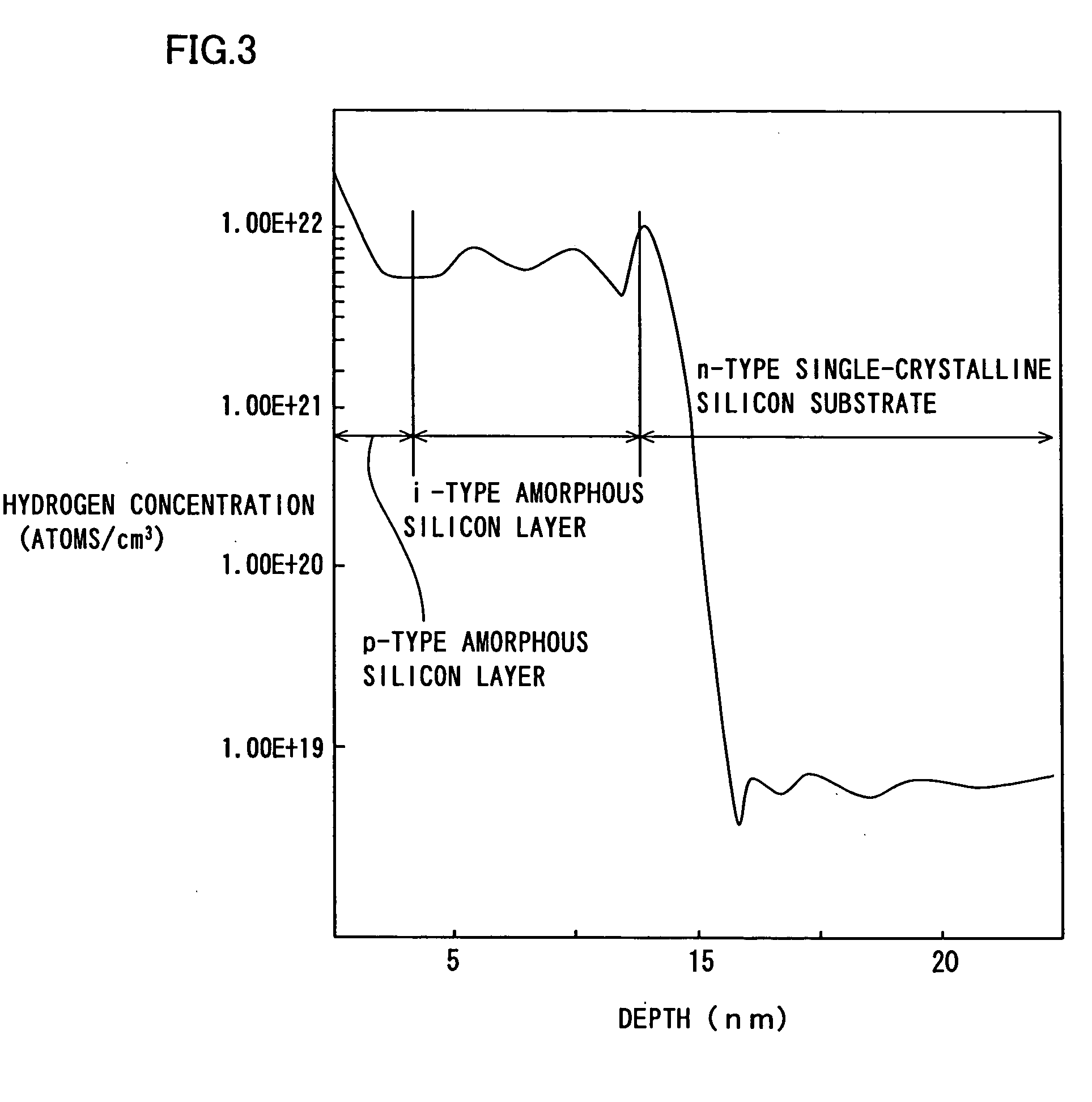Photovoltaic device
a photovoltaic device and photovoltaic technology, applied in the direction of semiconductor/solid-state device details, radiation control devices, instruments, etc., can solve the problems of disadvantageously difficult to improve the output characteristics of the photovoltaic device, and no countermeasures sufficient to suppress the recombination of carriers
- Summary
- Abstract
- Description
- Claims
- Application Information
AI Technical Summary
Benefits of technology
Problems solved by technology
Method used
Image
Examples
Embodiment Construction
-1 Example 1-1 10.0 .times. 10.sup.20 0.714 3.730 0.766 2.04 Example 1-2 18.5 .times. 10.sup.20 0.707 3.735 0.760 2.01
[0071] It is understood from Table 3 that the open-circuit voltages (Voc: 0.714 V and 0.707 V) of the photovoltaic devices according to Examples 1-1 and 1-2 are larger than the open-circuit voltage (Voc: 0.685 V) of the photovoltaic device according to conventional example 1-1. This is conceivably because the band gaps of the i-type amorphous silicon layers in the photovoltaic devices according to Examples 1-1 and 1-2 were increased beyond that in the photovoltaic device according to conventional example 1-1 due to the larger quantities of hydrogen atoms introduced into the i-type amorphous silicon layers for increasing built-in electric fields in p-i-n junctions.
[0072] It is also understood from Table 3 that the short-circuit currents (Isc: 3.730 A and 3.735 A) of the photovoltaic devices according to Examples 1-1 and 1-2 are larger than the short-circuit current (I...
PUM
| Property | Measurement | Unit |
|---|---|---|
| Thickness | aaaaa | aaaaa |
| Thickness | aaaaa | aaaaa |
| Thickness | aaaaa | aaaaa |
Abstract
Description
Claims
Application Information
 Login to View More
Login to View More - R&D
- Intellectual Property
- Life Sciences
- Materials
- Tech Scout
- Unparalleled Data Quality
- Higher Quality Content
- 60% Fewer Hallucinations
Browse by: Latest US Patents, China's latest patents, Technical Efficacy Thesaurus, Application Domain, Technology Topic, Popular Technical Reports.
© 2025 PatSnap. All rights reserved.Legal|Privacy policy|Modern Slavery Act Transparency Statement|Sitemap|About US| Contact US: help@patsnap.com



